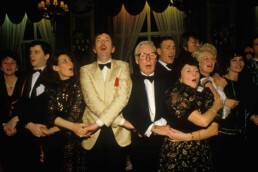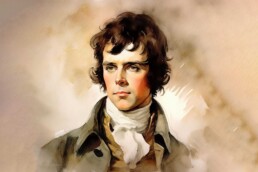Auld Lang Syne as Echoes of Midnight That Unite the World
As the clock approaches midnight on 31th December, a melody often rises in harmony around the world, its melancholy notes and emotional lyrics conveying a sense of nostalgia and oneness. This haunting melody has persisted over generations, civilisations, and continents, becoming woven into the fabric of New Year’s celebrations. Its origins, steeped in history and poetry, depict a tale as timeless as the emotions it elicits.
The seeds of this immortal song were planted in Scotland’s foggy hills in the 18th century. The words, credited to poet Robert Burns, were first written in 1788. However, Burns claimed that the lines were not wholly his own, stating that they were based on a “old song” he had heard via oral tradition. His brilliance consisted in transforming the shards into a cohesive, very emotional work that dealt with themes of friendship, grief, and remembering.
The expression “Auld Lang Syne” is ingrained in Scottish accent, loosely translating to “old long since” or, more poetically, “days gone by.” Burns’ song was adapted to the tune of a traditional Scottish folk melody, lending it a haunting aspect that stays with people who sing it.
The lyrics, rich in imagery and sentiment, address the common experience of cherishing shared experiences while acknowledging the passage of time. Lines like “We’ll tak’ a cup o’ kindness yet, for auld lang syne” imply that even as time passes, prior connections ought to be celebrated and reflected upon.
While the song begins with a question—”Should an old acquaintance be forgotten and never brought to mind?”—it responds vehemently in its lines. The message is clear: relationships, no matter how remote, are still worth honouring. This feeling has transformed the song into a global emblem of endings, beginnings, and the eternal strength of human connection.
Its transformation from a Scottish folk song to a worldwide anthem is nothing short of remarkable. The melody has been altered several times, with variations appearing in a variety of languages and circumstances. In the United States, bandleader Guy Lombardo popularised it as a New Year’s Eve tradition through his yearly radio and television broadcasts beginning in the late 1920s. This reinforced its link with the stroke of midnight.
In Japan, the song has been repurposed as “Hotaru no Hikari” (The Light of the Fireflies), a graduation song that represents appreciation and goodbye. South Korea, Thailand, and other countries have incorporated it into cultural rites, frequently changing the lyrics to reflect local traditions and moods.
Cinema has also embraced the song’s emotional appeal. From Frank Capra’s It’s a Wonderful Life to recent films like When Harry Met Sally, the melody highlights dramatic transitional moments, emphasising its significance as a soundtrack for endings and beginnings.
Perhaps its most famous role is as the unofficial anthem for New Year’s Eve. As the clock’s hands converge at midnight, people all over the world join hands, hoist glasses and sing the lines. The act is more than just a custom; it is a ritual of renewal, a collective acknowledgement of the past, and a hopeful look towards the future.
The song’s power is in its simplicity. Its lyrics and melody encourage involvement, even from people who don’t know all the words. The act of singing together creates a bridge across languages, generations, and borders.
In a divided society, this basic song’s continuing popularity stems from its capacity to bring people together. Its themes—friendship, unity, and remembrance—are eternal, as relevant in the twenty-first century as they were when Burns first penned them down.
Each performance, whether performed in a small gathering or broadcast to millions, demonstrates the song’s international appeal. As the old year ends and the new one begins, the notes remind us that no matter how much time passes, the links of human connection continue.
The next time the familiar chords rise into the air around midnight, take a moment to think on the journey of this wonderful song. It is more than just a song; it is a living witness to the power of recollection, the value of connection, and the promise of renewal. As we lift our glasses and sing together, we are not only commemorating the passing of time, but also celebrating the bonds that connect us across the years, miles, and ages.


